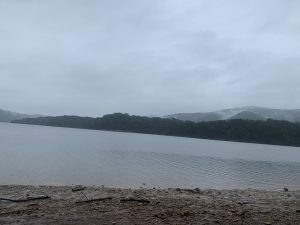
This is the view from my sit-spot. It’s at Carvin’s Cove just off of one of the paths. I’m sure that other people come down here because it’s not far and super simple to get to, but there’s never anyone around. I’ve always been drawn to water, so I knew that I wanted my sit-spot to focus on water somehow. When the sun is out (which it definitely was not when this picture was taken), there is all sorts of life wandering around – ants crawling on logs, dragonflies darting everywhere, birds singing in the trees. Behind me in this picture (to the NE) there’s a 2-ft embankment where the trees end. I like that it’s the best of both worlds: the lake and the forest. Where my (broken) umbrella is sitting with my backpack is where I sit, facing out towards the water. Also please do not judge my sketch – I want to major in biology and not art (as we can see, art is not my strong-suit).


My first time at my sit-spot was very wet. It had been raining and certainly didn’t stop for me. This meant that there was less animals out, but it also meant that there were less people out as well. As you can see in the picture, all of the plants/trees are still vibrantly green. I’m sure that they were enjoying the rain and would be laughing at how drenched I was getting. There’s some grass springing up to my left (S), which I didn’t expect since most of the ground is cobble, gravel, and sand (thank you macroinvertebrate lab for upping my ground vocabulary). Of course the ground was soaked, and little muddy puddles were starting to form where I had left footprints.
The animals were smarter than me, and were probably in their beds staying nice and warm while I sat on a log in the rain. The only ones to make appearances today were insects. I saw a large gnat, but it was white?? I’ve never seen a gnat or flying bug like that before, so it caught my attention as strange. I also had a couple big mosquitoes land on my shirt – I was not a fan of those because they were HUGE. As I was writing, I heard something chattering behind me (NE), which I think was a squirrel. There was a cawing of a bird to my right (N) that sounded like a crow, I think. This really made me realize how untrained my eyes are for picking out small movements around me – like Prof. Godard with the Puss Caterpillar in her sample blog post.
I’m not going to lie, I thought that this would be hard: trying to find an extra hour in my day to go sit and try to tune-in to nature. I felt anxious just at the thought, because think of all of the studying or homework or napping I could be doing during that hour! However, once I actually got there and started paying attention, the time flew by! It was really peaceful and honestly I would have stayed longer or hiked on the trail if it hadn’t been raining. I understand why people keep their sit-spots after the assignment is over.
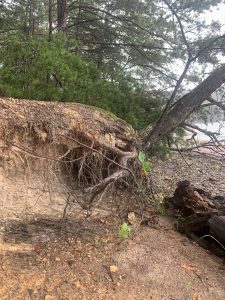
This is the first of my three objects to follow. The tree is at about a 50-degree angle coming out of the embankment, and the roots are exposed. I can’t imagine why it hasn’t fallen down yet, but I wonder how the change in seasons and weather is going to affect this precarious-seeming setup. I also wonder if the weather will affect the roots that are showing as well, like maybe some decomposition. The tree still has green pine needles on its branches, so I think that it’s still alive. Although I’m also not sure how exposed roots pull in water and nutrients for the tree.. It’s a lot to think about for me.
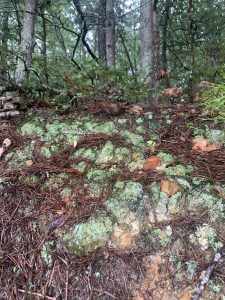 My next object to follow is the light green covering on the rocks. I originally marked it as moss on my drawing of my sit-spot, and I really did think that it was moss. Once I got home, I Googled it and, come to find out, it’s not moss at all! It’s something called lichens. They’re much fancier than moss because, according to Google, “moss is a simple plant, and a lichen is a fungi-algae ‘sandwich’ – a mix of at least two different organisms, a fungus and alga, living together as one.” How poetic, Google.
My next object to follow is the light green covering on the rocks. I originally marked it as moss on my drawing of my sit-spot, and I really did think that it was moss. Once I got home, I Googled it and, come to find out, it’s not moss at all! It’s something called lichens. They’re much fancier than moss because, according to Google, “moss is a simple plant, and a lichen is a fungi-algae ‘sandwich’ – a mix of at least two different organisms, a fungus and alga, living together as one.” How poetic, Google.
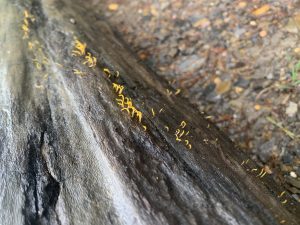
Finally, the object I’m most excited about following: this orange-yellow fringe growing about 1-ft and 4-ft to my right (N) on my log. It kind of reminds me of a sea anemone (like the one from Nemo), with its long little fronds. I did some more Googling about this, and when that wasn’t helpful (mostly due to my poor description) I showed the picture to my dad. “It’s some kind of fungus,” he said. Oh, of course it is dad. I thought I’d tried Googling fungus already, but ta-da! He has some sort of dad powers because it popped up immediately. I’ve narrowed it down to either Calocera cornea which grows on decaying wood, mostly grows on oaks and other hardwoods, and is common across the United States; or it’s Calocera furcata (forked stagshorn) which usually occurs on coniferous trees, but is more common in the United Kingdom and not common in the United States. So my guess is Calocera cornea, but who knows (obviously not me).

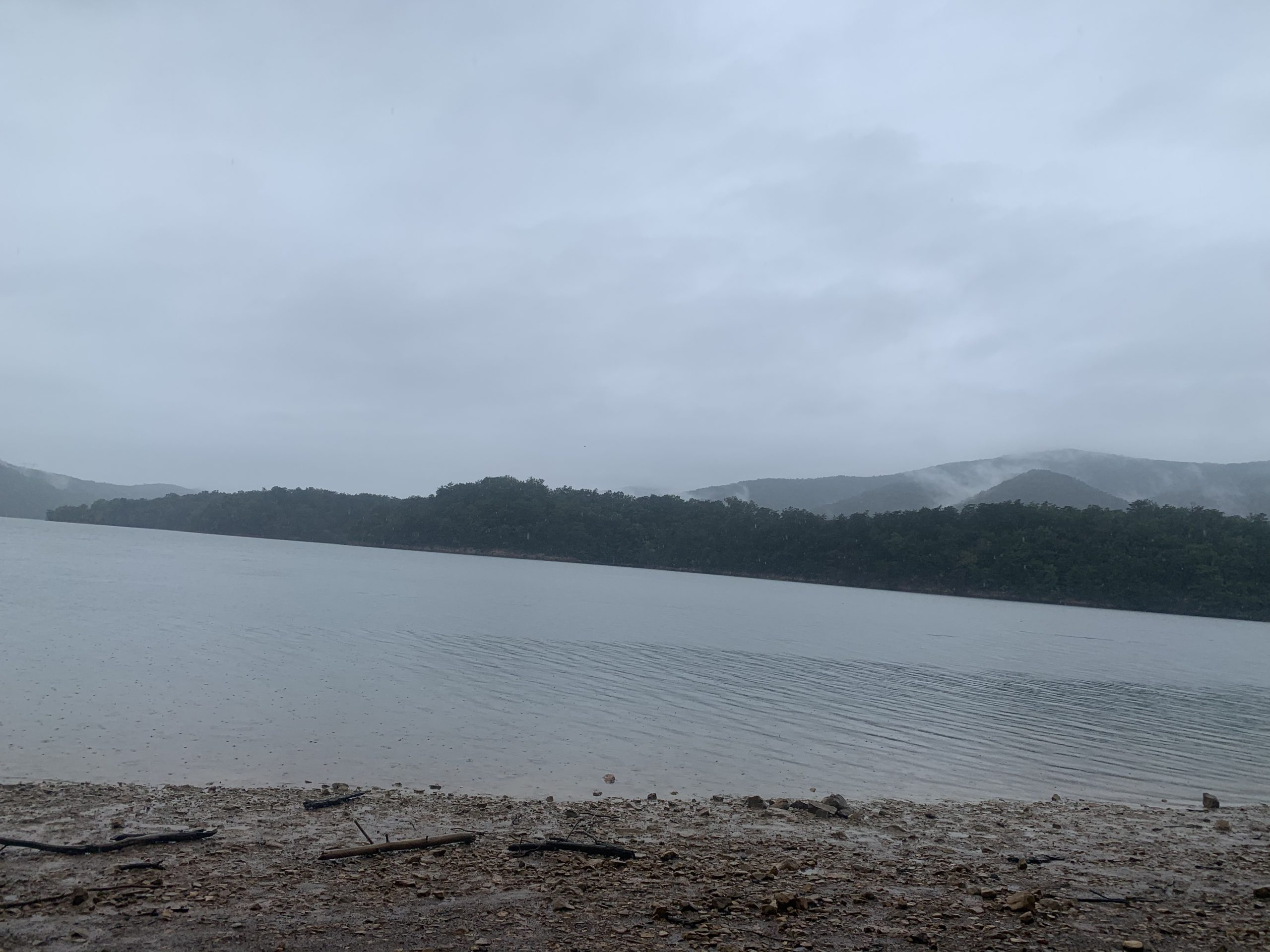
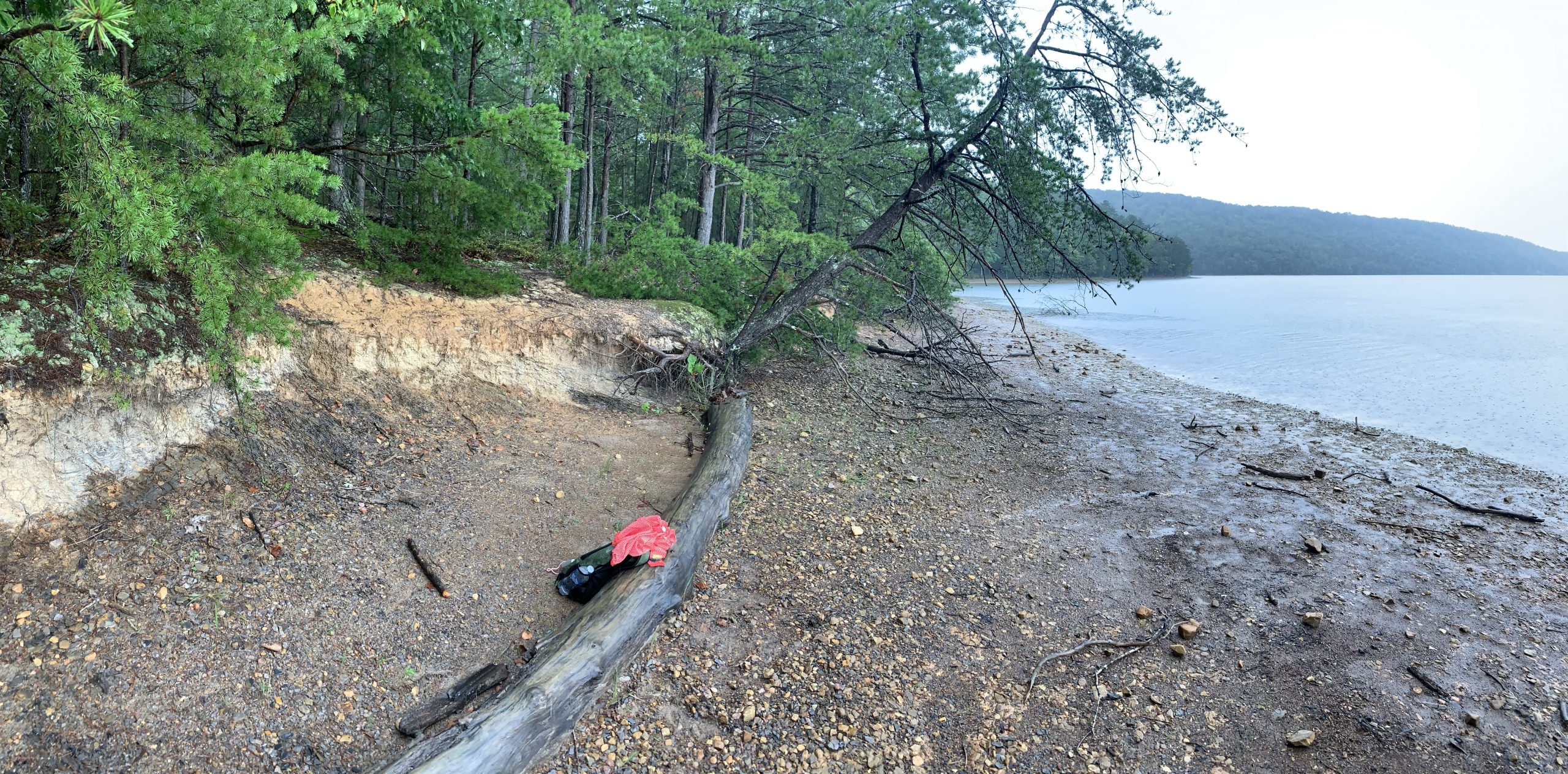
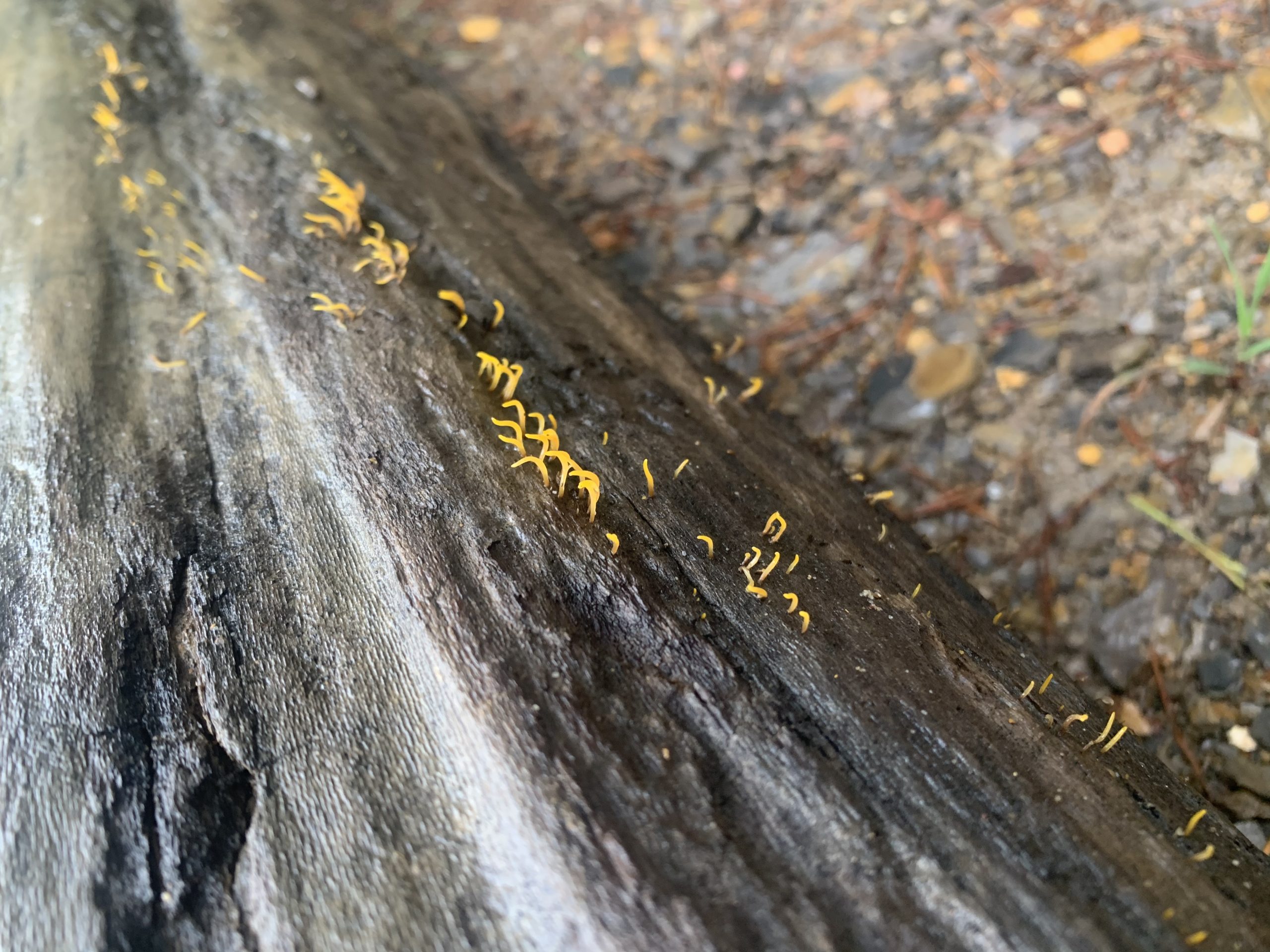
This view is gorgeous! I have also never heard of lichens so that’s really cool and I look forward to following the growth and/or death of it!:)
I love the Cove and am so glad you are going to be in this space for your sit-spot! I really enjoyed your blog post Breanne. I was connected to your experience through your words. I am excited about the objects you have chosen to follow and look forward to hearing more about your adventures in this spot! Good work!